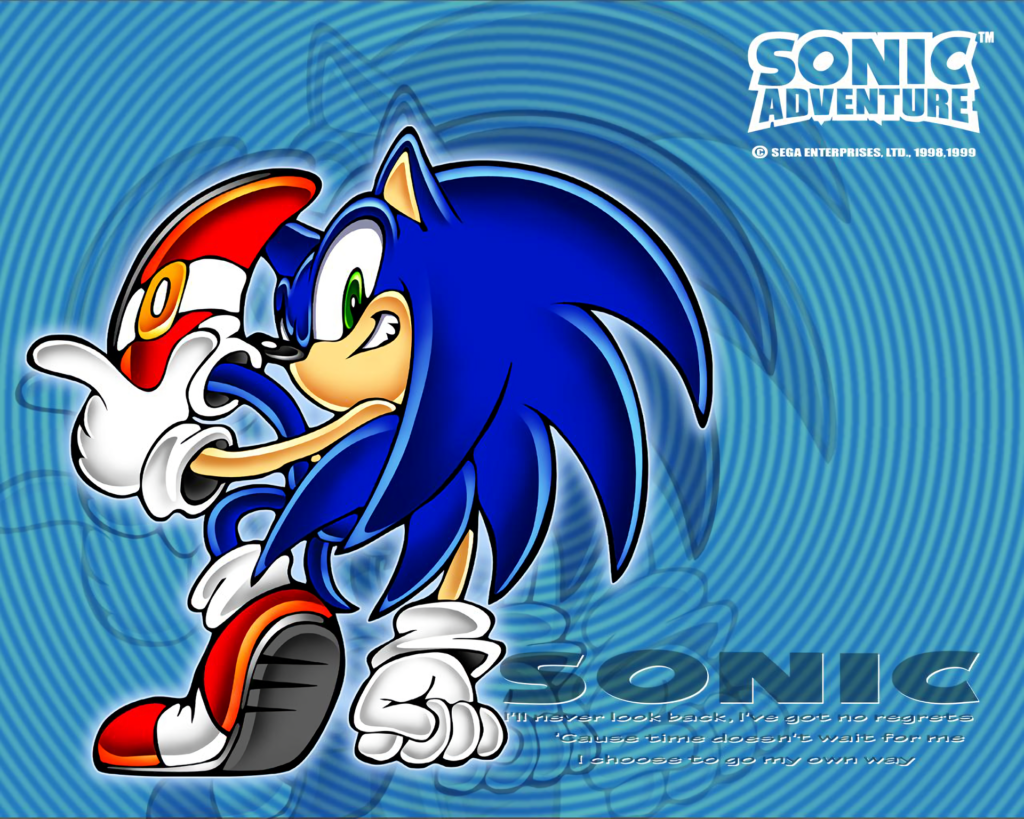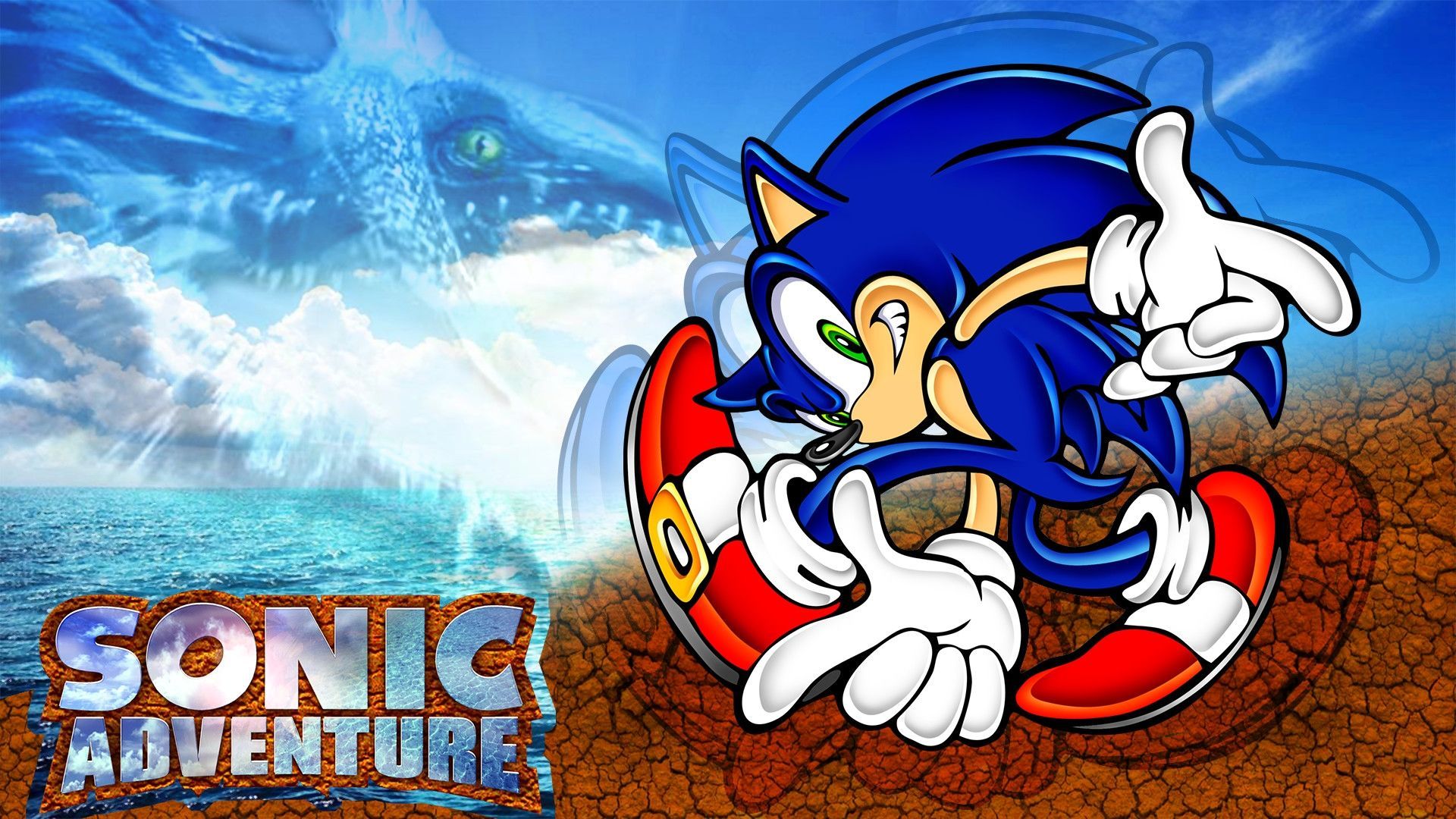By the late ’90s, video games had begun transitioning from 2D to 3D: in 1996, titles like Super Mario 64 and Crash Bandicoot hit the scene, as well as games like Final Fantasy 7 and Golden Eye 007 in 1997. Even Link set out on his journey to 3D with The Legend of Zelda: Ocarina of Time in 1998.
However, there was one series that had yet to officially make its entrance into the realm of 3D: Sonic the Hedgehog. Despite Sega’s earlier success with the first 3 mainline Sonic games (as well as Sonic CD), their competitors continued to find more tremendous success, both in terms of console and game sales. Sega needed a fresh new direction for Sonic. In 1998, Sega released Sonic Adventure for their Dreamcast, a console that signaled the coming shift in the gaming world with the sixth generation of consoles. Sonic Adventure is a 3D action platformer with a much stronger narrative focus than earlier Sonic series entries. While many elements of the original 2D games persisted, Sonic Adventure, in keeping with the spirit of its name, was a very adventurous endeavor on Sega’s part, including changes like a more rock-centered soundtrack (with one of the most amazing main themes in Open Your Heart by Crush 40), open hub worlds, new mechanics like the Light Speed Dash, as well as multiple playable stories that fit into a grander narrative.
The plot of the game centers around Sonic and his friends (Miles ‘Tails’ Prower, Knuckles the Echidna, Amy Rose, Big the Cat, and E-102 Gamma) working to stop Dr. Robotnik, or Eggman as he is more commonly known, from attempting to conquer the world by using an ancient creature named Chaos. The importance of the narrative in this game, as well as games in the series that followed it, is very profound. In pursuing a greater focus on storytelling, Sonic Team was able to delve deeper into not only Sonic’s character, but many of the other supporting cast members as well. As much as Sonic demonstrates himself to be the same daring blue blur he was known as from the first three mainline games, he also shows himself to be a character that cares for his friends, as well as a person that values justice — especially exemplified through his constant efforts to thwart Eggman’s plans for world domination. Unfortunately, some of Sega’s male-biased marketing/development persists in some areas, namely the character of Amy Rose. Her constant efforts in winning Sonic over made her seem very one dimensional at times, and albeit jokingly, I even caught myself expressing similar annoyance as Sonic whenever Amy showed up, which speaks to the challenges that still exist on a personal and societal level in terms of creating space for women to be celebrated in games, both as developers/players of games, and as characters within them. Even so, Amy shows herself to be an important characters with a variety of character traits just as the other characters in the story do. A profound example of this occurs when Amy vouches for E-102 Gamma, pleading with Sonic not to destroy him due to his help in Amy’s escape. She also helps Gamma to turn from working for Dr. Robotnik and to help in stopping his plans. A very commonly demonstrated and admirable quality of Amy’s character is her ability to see the good in others and inspire them to act upon it.
On another note, I think that Adventure (as well as its sequel) truly set up the Sonic line of games to explore important themes about society and humanity, one of those themes being greed and lust for power. Despite Eggman’s success in obtaining the Chaos Emeralds and summoning Perfect Chaos, his lack of foresight and compassion for his fellow human beings caused him to barrel headfirst into a plan that not only backfires on him, but also threatens to destroy the very world he wanted control of in the first place. In many ways, Eggman mirrors the consequences of engaging in industrial and scientific innovation for self-gain…despite the successes one may encounter, they more than likely run the risk of harming those around them — and themselves too.
One of the most important themes that stands out to me from this game though, is perseverance. Playing through Sonic’s story, while enjoyable, can also be a grueling process, especially due to some of the technical mishaps within the game. On the final boss of Sonic’s story, I died over and over again (much like my experience with Dead Cells 😂). However, for as much as the game emphasizes speed, this speed is juxtaposed with patience and focus. Eventually, I got into the zone and was able to beat the Egg Viper with enough persistence. Even throughout the story, the characters are faced with their constant failures in stopping Eggman from obtaining all the Chaos Emeralds, and the outcome seems very bleak. Despite this, Sonic refuses to shy away from the challenge and unlocks the power of Super Sonic once more, defeating Perfect Chaos. Sonic’s constant belief in himself and his desire to keep pressing forward are paramount to his character, and to the spirit of the series. Sonic’s main character theme, “It Doesn’t Matter”, exemplifies this same sentiment, with lyrics like:
It doesn’t matter now what happens, I will never give up the fight
There is no way I will run away from all of my frights
Long as the voice inside me says go, I will always keep on running
There is no way to stop me from going to the very top
It doesn’t matter who is wrong or who is right
In many ways, Sonic Adventure marked Sega and Sonic Team’s new ethos; it was their foray into telling stories that resonated with audiences and communicated important values like friendship, redemption, and courage. This transition into the 3D realm not only allowed Sonic as a series to become multi-dimensional, but Sonic and friends as well.

Side note: If you’d like to watch another review that dives deeper into what Adventure meant for Sonic then and now, J’s Reviews has a fantastic video on it that I’ll link here: Sonic Adventure | The Almost Perfect 3D Transition

